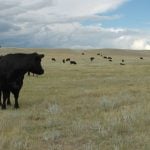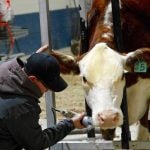Field surveys from 2001 to 2003 found herbicide-resistant weeds on 20 per cent of cultivated land across Western Canada. However, a random survey of 300 fields in Alberta in 2007 indicated that wild oats resistant to Group 1 herbicides had jumped to 39 per cent of fields in that province, up from 11 per cent six years earlier. Those numbers suggest rapid spread.
That was only part of the bad news in Hugh Beckie’s presentation at the Bayer CropScience weed resistance conference in Miami, Florida last month.
The Agriculture and Agri-Food Canada weed scientist also reported that Group 2 resistance had been identified in 19 weed species, including economically important weeds such as wild mustard, chickweed, spiny annual sow thistle, Russian thistle, bindweed and cleavers. And “all kochia populations” can now be considered Group 2 resistant, he said. “This is a weed that’s really on the move.”
Read Also

Navigating the tricky world of growing strawberries in Alberta
One Albertan fruit producer offered advice to those who are planning on growing strawberries in Alberta.
The bad news continues. Although still low, reports of weeds with multiple (Group 1 and Group 2) resistance are increasing. Beckie has had reports of growers having to re-spray wild oats with Group 1 and 2 products, and getting control with neither. Some of these plants also appear to be resistant to Avenge and Avadex.
Beckie, who works for AAFC in Saskatoon, blamed the popularity of Group 1 and 2 herbicides for their developing problem with weed resistance. Cereal growers, he explained, have relatively few options for in-crop control of grassy weeds. And since cereals are the most widely grown Prairie crops, use of these two herbicide groups has been heavy since their introduction about 30 years ago. At that time, before introduction of herbicide tolerance technology, they were also widely used in canola.
The good news is that in Western Canada, weed resistance to herbicides with other modes of action remains low (phenoxies) or nonexistent (glyphosate and glufosinate).
Beckie sees no magic bullets for grain growers caught in a Group 1/2 resistance bind. To the extent possible, he suggests crop and herbicide rotations. Also worth considering: herbicide mixtures, rotation to herbicide-tolerant canola, spot control (patch management), and maybe even a return to the old residual products such as Avadex and trifluralin.
Recent research, he adds, indicates that herbicide mixtures are more effective than rotations in mitigating herbicide resistance evolution in weeds.














